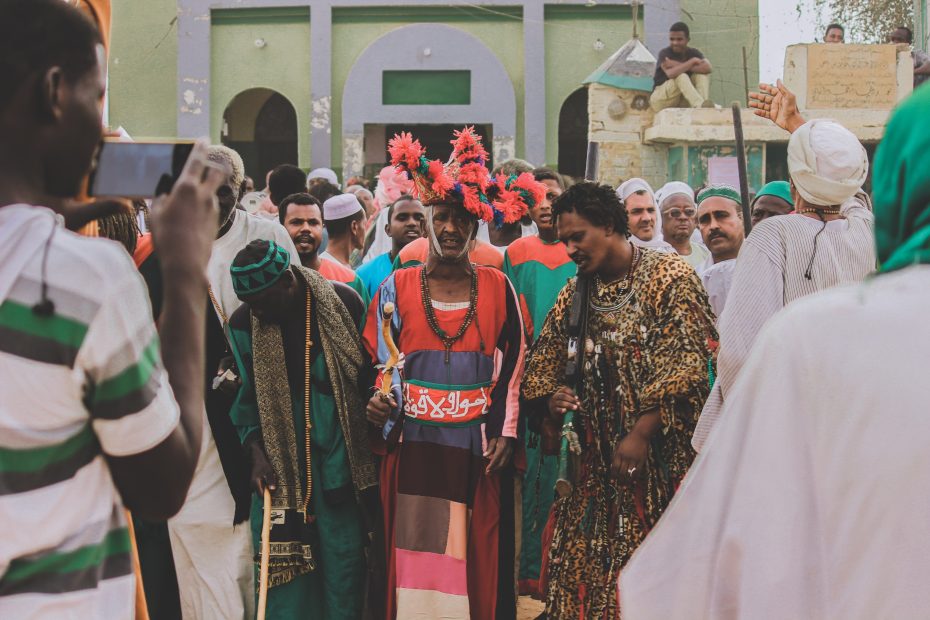Table of Contents
Introduction
South Sudan is one of the world’s newest nations, having gained independence in 2011 after decades of conflict. Despite its tumultuous history, South Sudan has a vibrant and diverse culture that is finally coming into the limelight. Music, food, language, art, literature, religion and architecture are all integral parts of South Sudanese culture, showcasing the country’s ethnic plurality. While conflict and instability have threatened cultural preservation, recent efforts aim to celebrate South Sudanese culture and share its magnificence with the world.
Main Cultural Aspects
Music and Dance
Music and dance are integral to the cultural fabric of South Sudan. The country has a wide range of musical styles, from the upbeat dance rhythms of the Azande people to the vocal songs of the Dinka pastoralists. Drumming features prominently, with drums made from wood, clay and animal skin. Dances play an important role during celebrations, storytelling and religious ceremonies. The rhythmic dances represent the history and ideals of the community.
Food
South Sudanese cuisine relies on staple ingredients like sorghum, maize, okra, peanuts, tomatoes, and tropical fruits. Signature dishes include kisra, a fermented flatbread, and walwal, a dipping sauce. Regional variations exist between the cattle-keeping communities and farming communities. Food plays an important role in South Sudanese culture, with the act of communal eating bringing people together.
Languages
South Sudan is linguistically diverse, with over 60 indigenous languages spoken. The most widely spoken languages are Dinka, Nuer and Bari. Arabic and English are used for inter-ethnic communication, having been introduced during colonization. Language is deeply tied to cultural identity, with each language communicating a unique worldview. Preserving linguistic diversity is thus key to protecting South Sudan’s culture.
Art and Crafts
South Sudan has a vibrant artistic tradition spanning various mediums. Handicrafts like pottery, basket weaving, wood carving and rock paintings make up the country’s traditional arts. Cow horn trumpets are integral to the cattle-keeping communities. Modern visual arts are also emerging, as artists explore South Sudan’s culture through painting, photography and graffiti.
Literature
South Sudan has a strong oral tradition, with folk tales, songs, and proverbs passed down generations. Common themes center on cultural values like morality, hospitality, and community. Modern written literature is still nascent but growing, as authors draw from the nation’s rich storytelling tradition. The civil war acted as a catalyst, with South Sudanese writers exploring identity and resilience through poetry and memoirs.
Religion
South Sudan is religiously diverse, with most people following Christianity or African traditional religions. Islam also has followers, particularly in the north. Religion permeates daily life and culture, from the incorporation of music and dance in religious ceremonies to architectural styles. Interfaith harmony is integral to preserving unity.
Architecture
Vernacular architecture dominates South Sudan’s traditional built environment. Circular, mud-walled tukuls with conical thatch roofs are common, built to suit the climate and lifestyle. Decorative designs showcase cultural aesthetics. Modern architecture is emerging in urban centers, juxtaposing glass and steel structures against traditional mud huts.
Challenges and Opportunities
Years of conflict and instability in South Sudan have disrupted the transmission of cultural knowledge to younger generations. Promoting cultural tourism can aid preservation efforts while boosting the economy. With peace, South Sudan can rediscover its heritage and share it with the world. Educational initiatives to teach traditional practices will be key.
Conclusion
South Sudan’s vibrant culture has persevered despite trying circumstances. From soulful songs to colorful textiles, the country’s diverse heritage testifies to the richness of human creativity and community. By celebrating and preserving age-old traditions while adapting for the future, South Sudan’s culture can continue enlightening generations to come. The unveiling of South Sudan’s magnificence is set to illuminate the global cultural landscape.
FAQs
Q: What are some defining aspects of South Sudanese culture?
A: Key aspects include music, dance, food, languages, art, literature, religion and architecture. There is immense diversity between the many ethnic groups.
Q: How has conflict impacted cultural preservation?
A: Years of civil war disrupted the transmission of cultural knowledge and threatened the survival of traditions. But culture remains ingrained in communities.
Q: What initiatives aim to preserve South Sudanese culture?
A: Educational programs to teach youth traditional practices, cultural centers to nurture the arts, and promoting cultural tourism to boost the economy and sharing of culture.
Q: How is South Sudanese literature evolving?
A: From a strong oral tradition, written literature is emerging as authors explore identity and resilience through memoirs, poetry and novels.
Q: What is the architectural landscape like in South Sudan?
A: Vernacular mud, wood and thatch structures prevail in rural areas. Modern steel and glass architecture is emerging in cities, contrasting traditional designs.
